About the Corps’ Middle East Division’s Extensive Construction Program in Saudi Arabia
Beginning in 1951, the Trans-East and Gulf Districts of the former Mediterranean Division, U.S. Army Corps of Engineers, carried out U.S. government-sponsored construction projects in the Middle East. By the mid-1960s, Saudi Arabia requested the Corps’ expertise on mass communications projects and the construction of Saudi military infrastructure, all of which they funded. On April 20, 1976, the Middle East Division (MED) was formed to oversee this construction program in Saudi Arabia, which by that time had become extensive.
From its headquarters located at Riyadh, the division administered three districts in Riyadh, Al Batin, and Jiddah. Design and contracting offices, employing some 400 personnel, were set up at division (rear) located between Berryville and Winchester in northern Virginia.
Under an Engineer Assistance Agreement and a subsequent Memorandum of Understanding between the Corps and the Saudi Ministry of Defense and Aviation (MODA), the division would help MODA build three large bases, MODA headquarters, the Royal Saudi Air Force headquarters, a military academy, an airborne training school, housing, airfields, ports, hospitals, schools, and road infrastructure. The Corps also would build an engineer training center and carry out its military engineering training program.
The jewel of the entire Saudi program was the construction of King Khalid Military City (KKMC), a massive base designed to house more than 70,000 personnel. It alone cost $8.5 billion. KKMC was built as an octagonal-shaped city with houses and apartments in its northern section, command, recreational, and training facilities for three brigades in its southern sector, and a commercial city center area that also contained schools and a mosque. This was the single largest military construction project in Corps history and required the awarding of more than thirty large contracts.
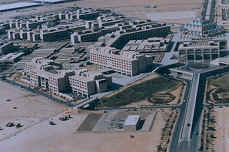 |
|
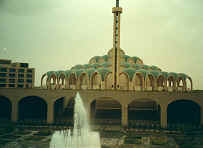 |
| aerial view of KKMC |
|
entrance to KKMC |
| |
|
|
| mosque at KKMC |
|
precast concrete plants |
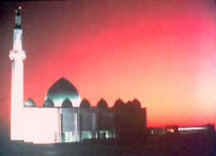 |
|
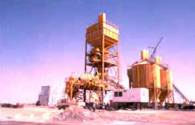 |
With no support facilities in place for these projects, the division imported most of the multinational labor force—at just one project site fifteen languages were represented—and housed and fed them. It brought into Saudi Arabia most of the construction machinery and built facilities in country for the production of building materials. The division also built from scratch a port at Ras al-Mish’ab in order to handle the load of materials specifically needed for the construction of KKMC. The port was designed with four general cargo berths, one cement berth, and storage and support facilities.
The Corps also managed other high-profile projects. These included the construction portion of the $2.5 billion Saudi Naval Expansion Program, which included the building of deepwater ports at Jubail and Jiddah, an interim repair facility at Dammam, and the naval headquarters complex at Riyadh. MED oversaw additional work in Oman, Qatar, Egypt, Jordan, and Somalia during this period.
The Saudi program was phased out in 1988 by which time MED had become the Middle East/Africa Projects Office (MEAPO) headquartered at Winchester. Eventually, MEAPO evolved into the Transatlantic Programs Center and then the Middle East District.
MED had managed a $14 billion construction program, fully funded by the desert kingdom. Over its lifespan, 3,000 Corps employees rotated through Saudi Arabia. As a result of the program, the Saudi and U.S. governments forged a bond that paved the way for Saudi acceptance of an American presence on their soil during Operations Desert Shield/Storm.
|
Former Chiefs, Lt. Gen. E.R. Heiberg (right), and Lt. Gen. John W. Morris (second from right), discuss the Saudi program with Ministry of Defense and Aviation officials while touring Corps-built projects in April 1988. Heiberg and Morris were guests at a ceremony marking the completion of the Saudi construction program. (Photo source: TAC/Middle East District)
|
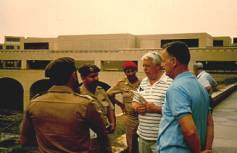 |
* * *
February 2003
Revised November 2009